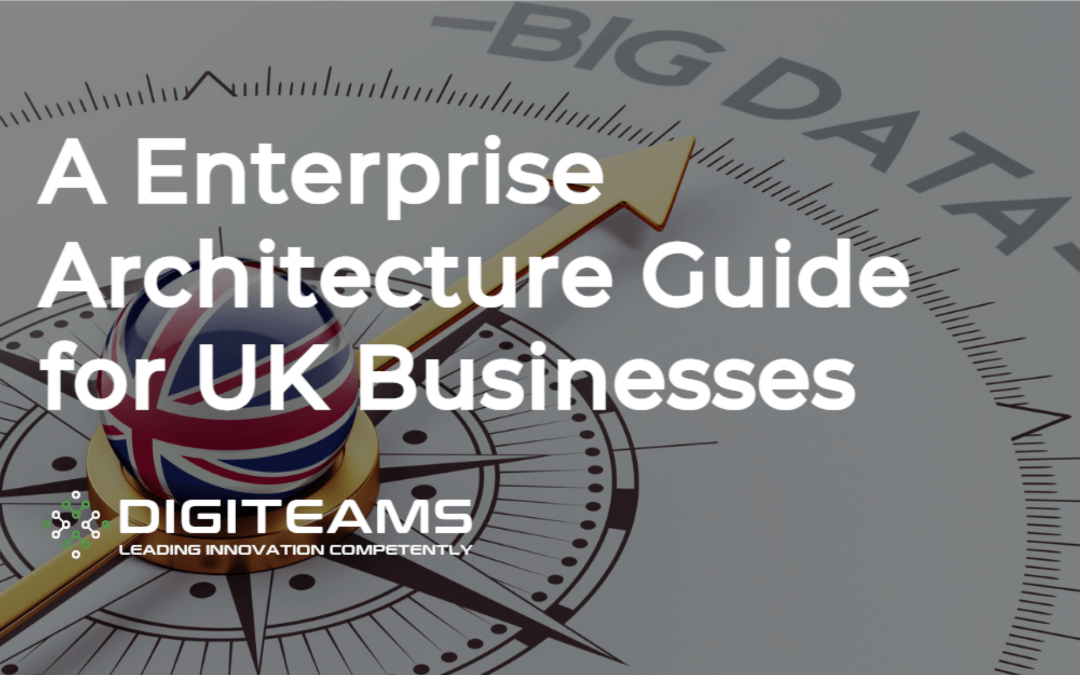Business leaders in the UK are facing a plethora of challenges and opportunities. The digital landscape is continuously evolving, and with it, the demands of modern business operations. So, how can you navigate this change effectively? The answer lies in Enterprise Architecture (EA).
DigiTeams believes in the power of EA and its capacity to guide businesses through the intricate process of digital transformation.
This article aims to provide UK businesses with insights into incorporating EA to drive holistic business transformation.
Understanding Enterprise Architecture
Enterprise Architecture is a strategic discipline that encompasses an organisation’s key business processes, IT infrastructure, data, applications, and more. It creates a holistic view of an organisation’s strategy, processes, information, and IT assets, with the goal of aligning these aspects with the organisation’s core objectives and strategic direction.
EA allows organisations to see how their various functions interact, helping identify potential efficiency improvements, redundancies, and areas of risk. This visibility aids in better decision-making, improved adaptability, increased agility, and more robust risk management.
Why Enterprise Architecture Matters
EA is no longer just about IT infrastructure; it has become a critical part of strategic business planning. For UK businesses, there are several reasons to consider adopting an EA approach:
Increased Business Agility
EA helps organisations react quickly to changes in market dynamics, customer preferences, or regulatory environments, giving a competitive edge in an increasingly volatile business environment.
Enhanced Decision Making
With a unified view of business and technology, decision-makers can identify where adjustments are needed to processes, IT resources, or strategic objectives.
Reduced Complexity
EA simplifies the complexity of business processes and IT infrastructure, making it easier to manage and evolve.
Improved Risk Management
By identifying dependencies and potential vulnerabilities, EA aids in mitigating risk.
Steps to Incorporating Enterprise Architecture
Integrating EA into your business doesn’t happen overnight. It’s a journey that involves strategic planning, buy-in from key stakeholders, and a keen understanding of your business operations. Here’s a brief guide:
Define Your Business Strategy
The foundation of an effective EA is a well-defined business strategy. Know your organisation’s vision, mission, and strategic goals.
Develop an EA Team
Identify or hire professionals with expertise in EA. Your team should include individuals who understand both the technical aspects and the business strategy.
Create Your EA Framework
Your framework should include your organisation’s processes, systems, data, and technologies, and how they interact. There are several recognised EA frameworks, such as TOGAF or Zachman, that can guide this process.
Implement and Monitor
Once your EA is in place, it needs to be monitored and adjusted as necessary. This is a continuous process of refinement to keep your EA in line with your changing business needs.
Partner with Experts
Incorporating EA is a significant commitment that requires specific skills and expertise. By partnering with DigiTeams, you can ensure your EA journey is guided by professionals who understand your needs and have a proven track record of delivering successful transformations.
At DigiTeams, we offer tailored EA services that can help align your business and IT strategies, drive efficient decision-making, improve business agility, and simplify your business complexities. With our dedicated team, you will be well-equipped to navigate the complexities of digital transformation in today’s fast-paced business environment.
With the correct application of Enterprise Architecture, your businesses can indeed achieve holistic transformation.
To learn more about how DigiTeams can assist your business in adopting Enterprise Architecture, get in touch with us today. Let’s redefine the future of your business, together.
Click here to unlock more of our detailed, educational content.
